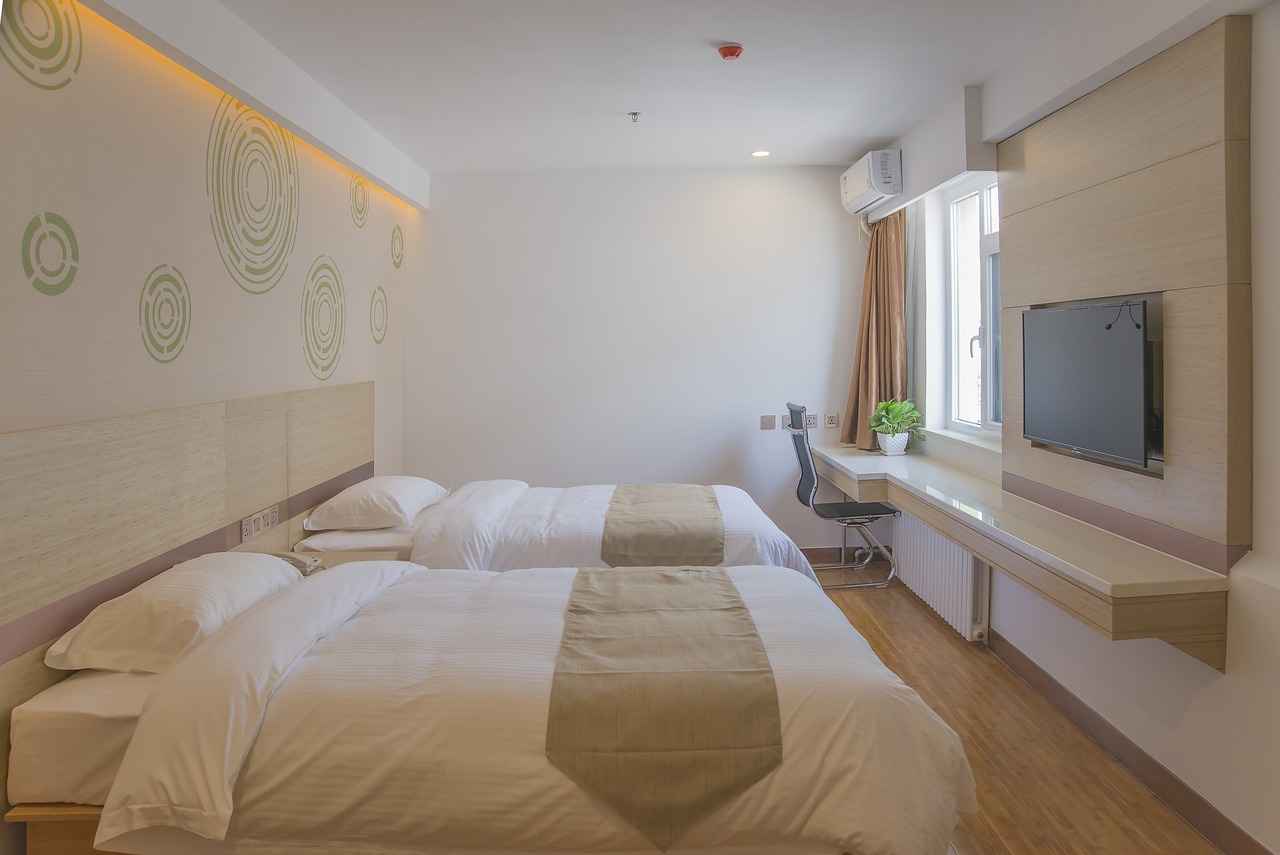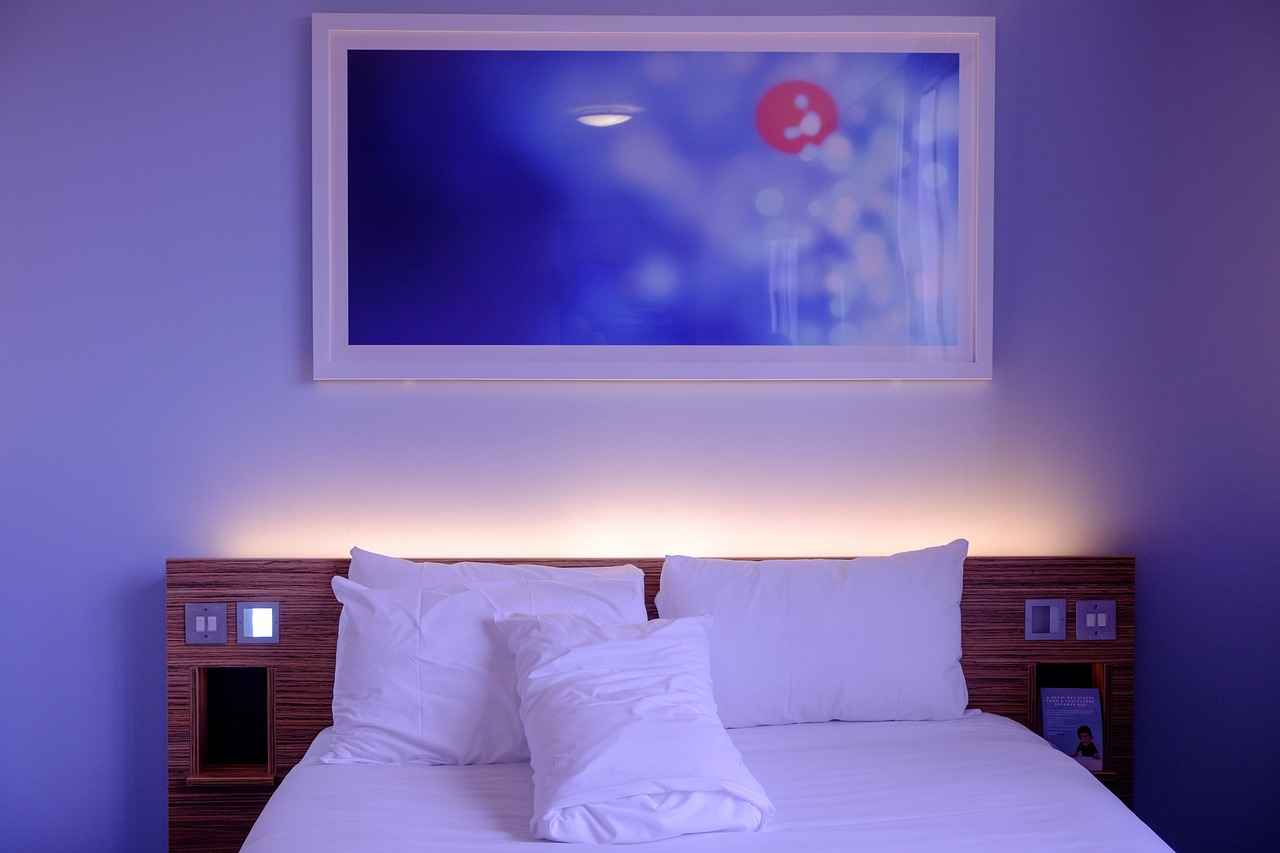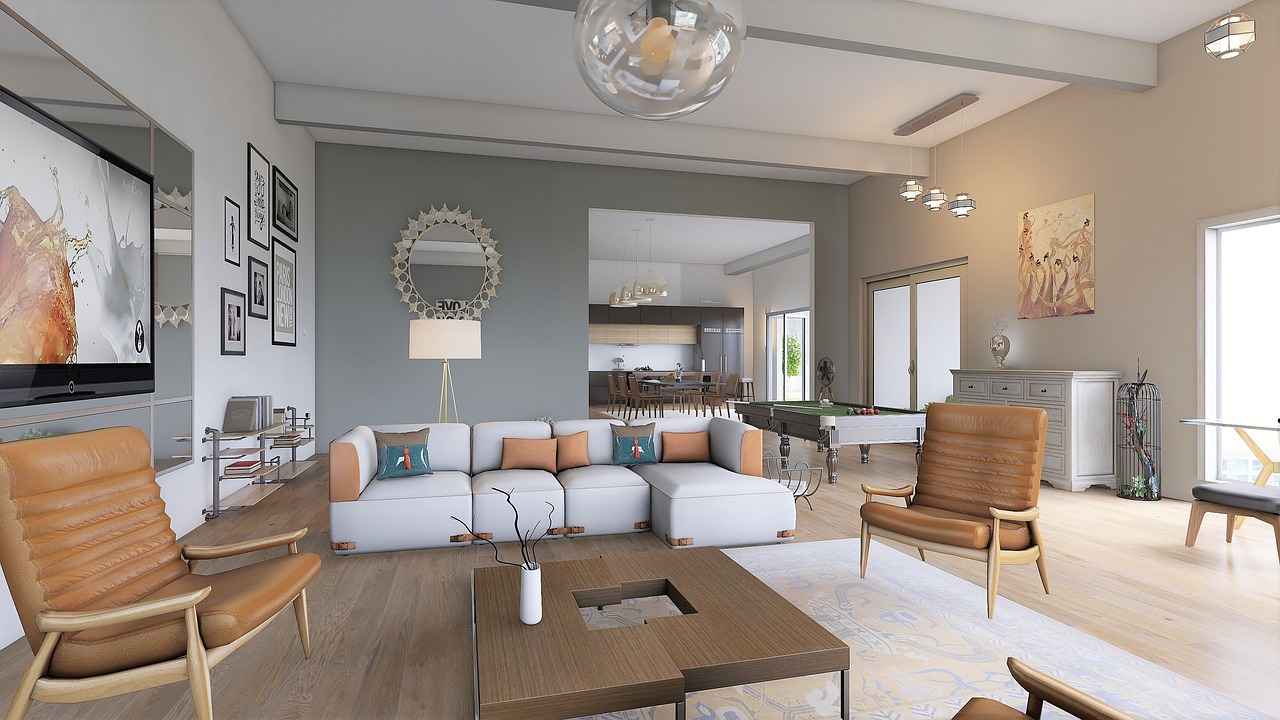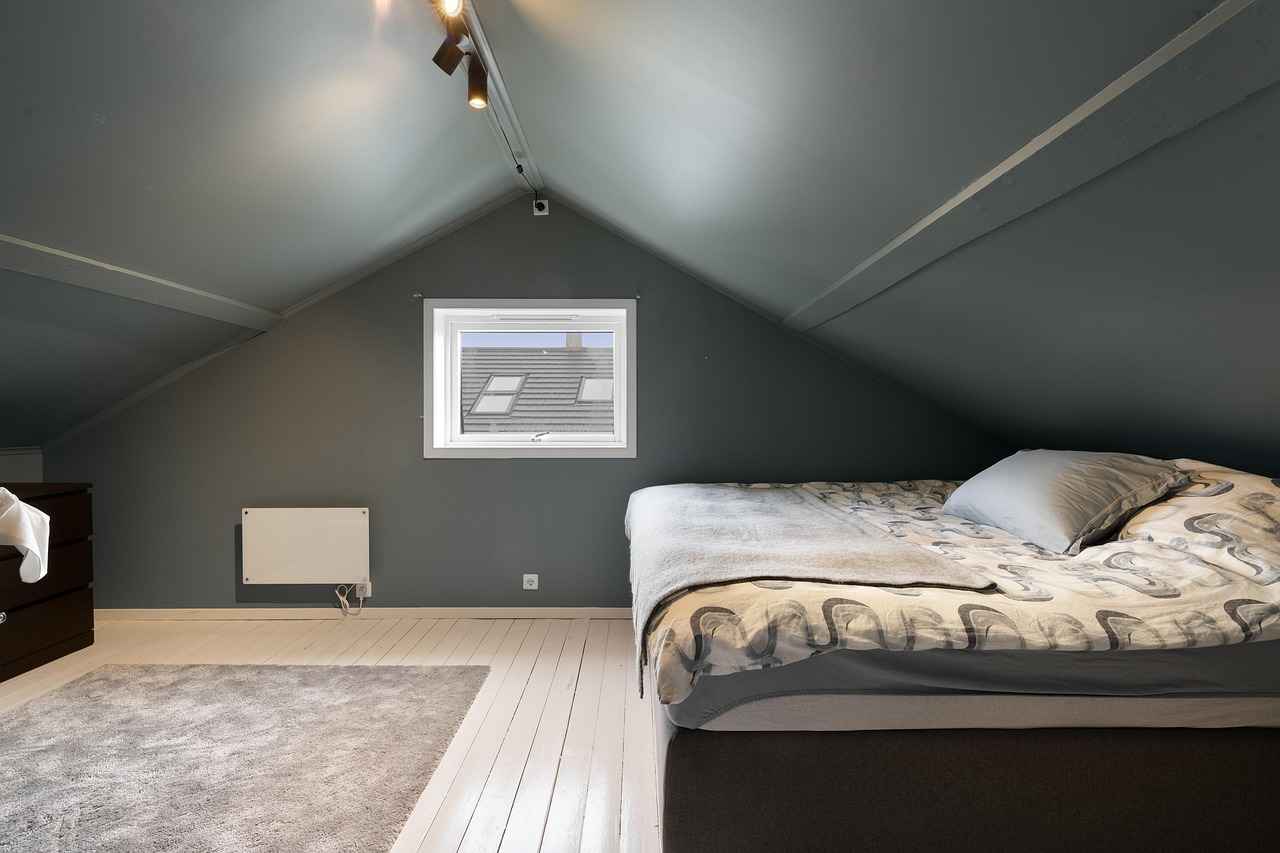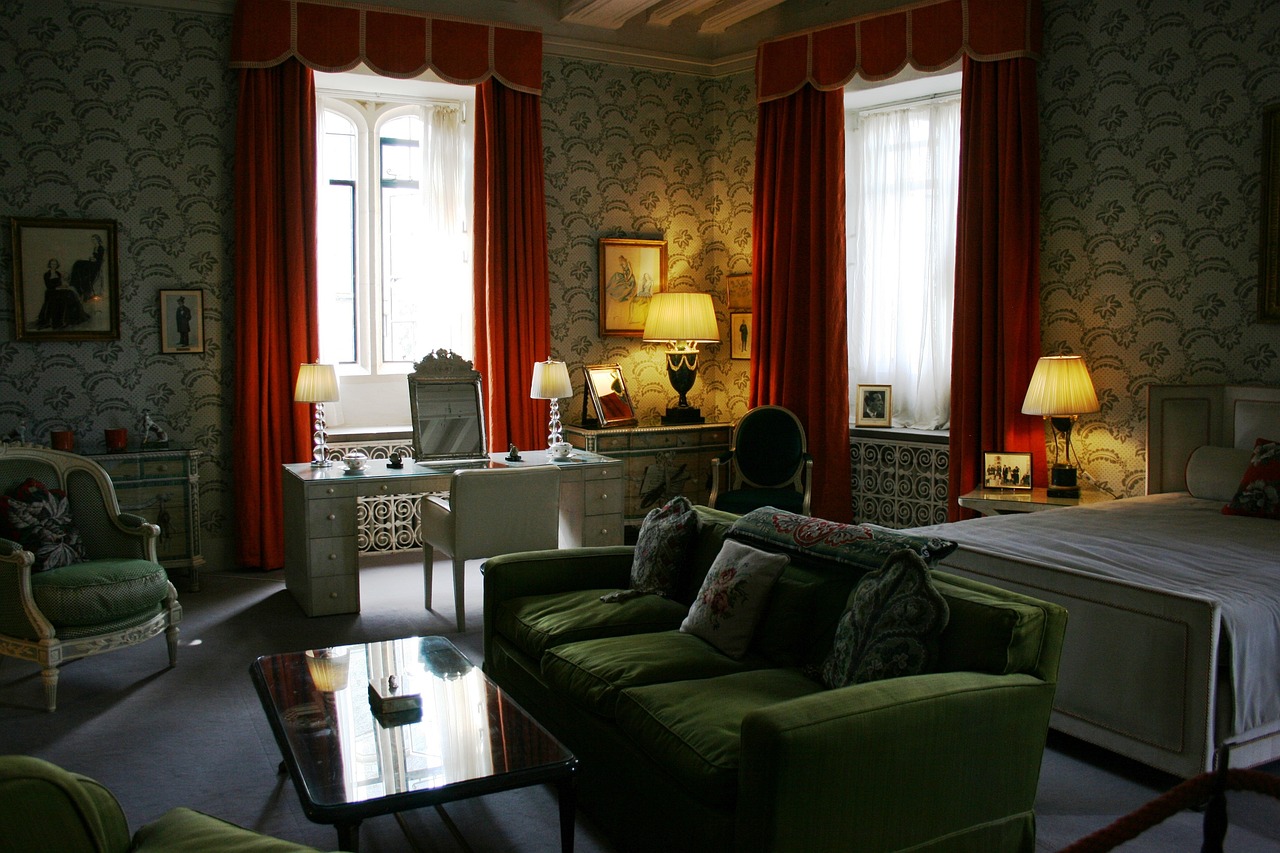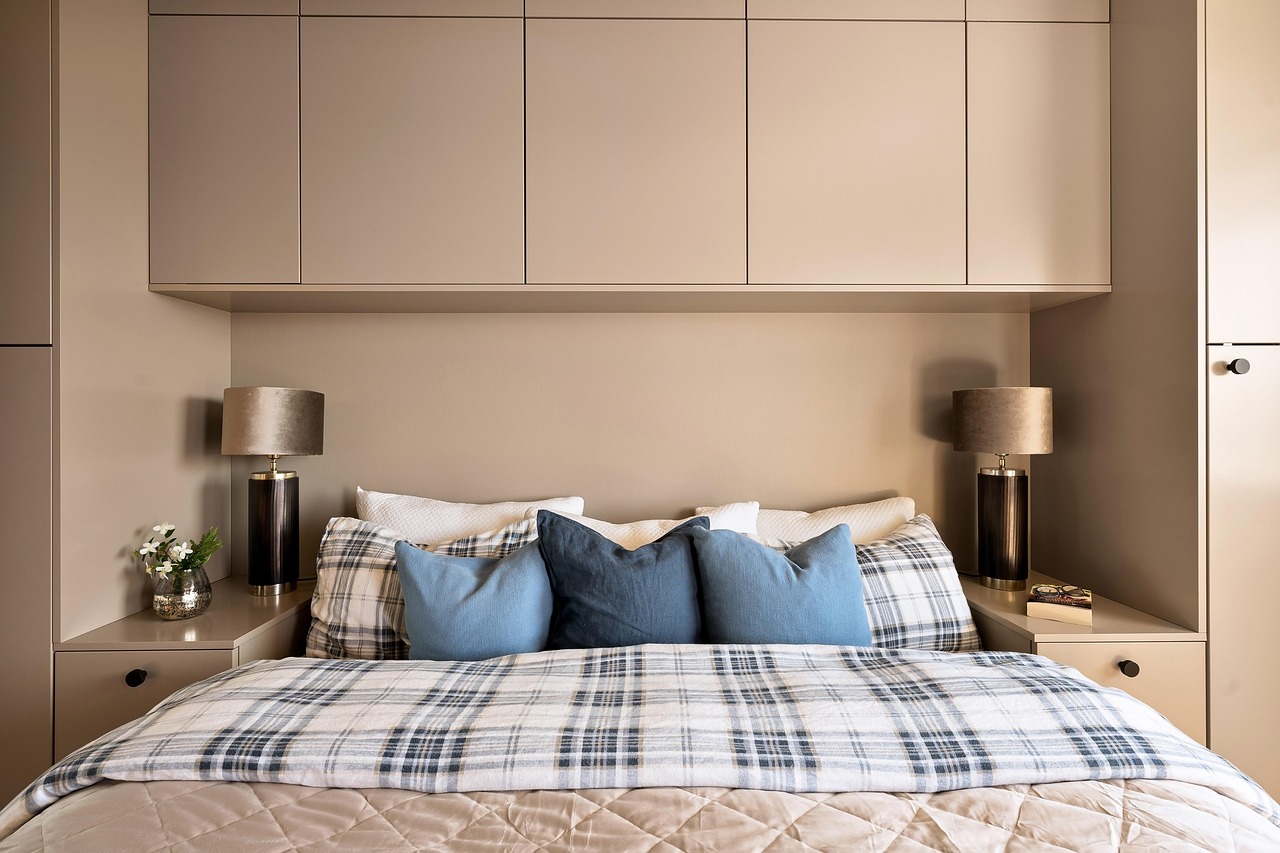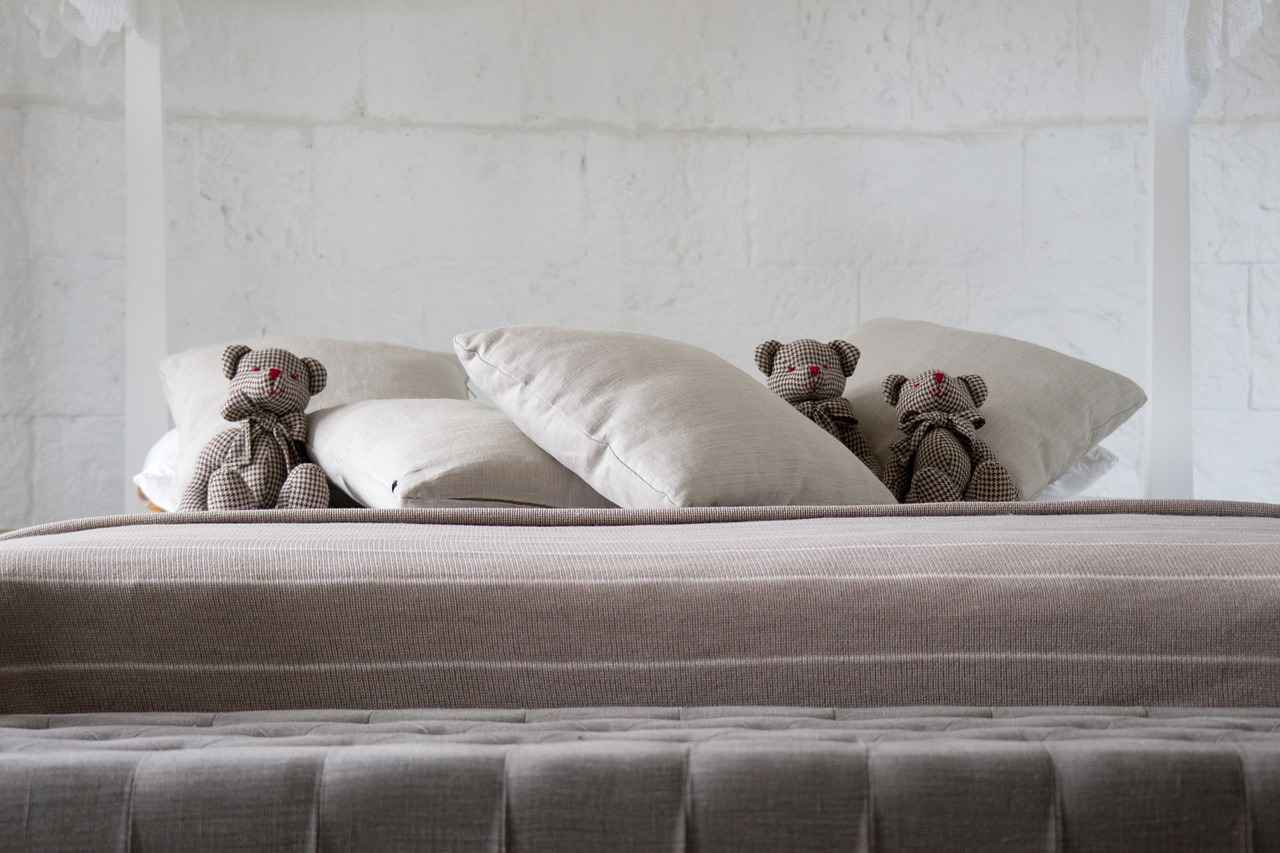This article explores the latest trends in bedroom furniture design for 2025, highlighting innovative styles, sustainable materials, and practical insights to help you create a modern and stylish bedroom.
1. Minimalist Bedroom Furniture
Minimalism continues to be a dominant theme in bedroom design, emphasizing clean lines and functional pieces that foster a serene atmosphere. To effectively incorporate minimalist furniture, consider pieces that serve multiple functions, such as beds with built-in storage, which help maintain an uncluttered space.
2. Sustainable Materials in Furniture
With sustainability gaining importance, many designers are embracing eco-friendly materials. Opt for furniture crafted from responsibly sourced wood, recycled metals, and organic fabrics. These options not only enhance your bedroom’s aesthetic but also contribute positively to the environment.
- Bamboo and Rattan Furniture
- Benefits of Bamboo Furniture: Bamboo is renowned for its strength and versatility. It grows quickly and can be harvested sustainably, making it an excellent choice for eco-conscious consumers.
- Rattan’s Timeless Charm: Rattan furniture brings warmth and texture to your space. Its natural look complements various styles, from bohemian to contemporary.
- Recycled Materials: Furniture made from recycled materials not only reduces waste but also offers unique designs that can add character to your bedroom.
3. Smart Furniture Solutions
The integration of technology into furniture design is on the rise. Smart beds and mattresses equipped with sleep tracking features can significantly enhance your sleep quality. Additionally, consider multi-functional furniture that can adapt to your lifestyle, such as desks that convert into beds or seating that doubles as storage.
4. Bold Colors and Patterns
For 2025, expect to see a surge in bold colors and striking patterns in bedroom decor. Incorporate vibrant hues through accent walls or decorative pillows to create a lively atmosphere. Textured fabrics, like velvet or boucle, can also add depth and interest to your furniture choices.
- Accent Walls: An accent wall can dramatically alter the ambiance of your bedroom. Choose a bold color or a unique wallpaper pattern to make a statement.
- Textured Fabrics: Layering different fabrics can enhance the visual appeal of your space. Consider mixing materials like linen, cotton, and velvet for a rich, inviting look.
5. Vintage and Retro Styles
Vintage and retro designs are making a comeback, allowing homeowners to blend modern aesthetics with nostalgic elements. Mid-century modern furniture pieces are particularly popular, offering a timeless appeal that complements contemporary decor.
- Mid-Century Modern Influence: Incorporate iconic mid-century designs, such as sleek dressers or minimalist nightstands, to add a touch of sophistication to your bedroom.
- Antique Accents: Antique furniture can provide character and charm. Look for unique pieces that resonate with your personal style and enhance your overall decor.
6. Personalization and Customization
Personalized furniture allows homeowners to express their individual style. Customizable bed frames and decor elements can transform your bedroom into a reflection of your personality. Explore options for bespoke furniture that meets your specific needs, whether it’s a unique headboard or tailored storage solutions.
- Customizable Bed Frames: Many manufacturers now offer bed frames that can be tailored in size, material, and design, ensuring a perfect fit for your space.
- Personalized Decor Elements: Incorporate custom artwork or family heirlooms to add a personal touch to your bedroom, making it feel more inviting.

1. Minimalist Bedroom Furniture
In recent years, minimalism has emerged as a dominant trend in bedroom design, creating spaces that are not only visually appealing but also promote a sense of calm and tranquility. As we move into 2025, the minimalist aesthetic continues to evolve, focusing on clean lines, functional pieces, and a deliberate absence of clutter. This article delves into how you can effectively incorporate minimalist furniture into your bedroom, transforming it into a serene sanctuary.
- Choose a Neutral Color Palette: Start by selecting a color palette that emphasizes neutrality. Shades of white, beige, and soft grays can create an airy atmosphere. Consider using these colors on walls, bedding, and furniture to maintain a cohesive look.
- Invest in Quality Over Quantity: Minimalism is about making intentional choices. Instead of filling your space with numerous items, invest in a few high-quality pieces that serve multiple purposes. For instance, a bed frame with built-in storage can help declutter your space while being visually appealing.
- Focus on Functional Furniture: When selecting furniture, prioritize functionality. Look for designs that offer practical solutions without compromising style. A sleek nightstand with drawers can keep essentials organized while maintaining the minimalist aesthetic.
- Embrace Open Spaces: A key element of minimalism is the use of open spaces. Avoid overcrowding your bedroom with furniture. Leave ample room for movement and consider using floating shelves or wall-mounted lights to free up floor space.
- Incorporate Natural Elements: Bringing in natural materials such as wood or stone can enhance the minimalist design. A wooden bed frame or a stone accent can add warmth and texture, making the space feel inviting yet uncluttered.
To further enhance your minimalist bedroom, consider the following practical tips:
1. Limit decorative items to a few carefully chosen pieces that resonate with you.2. Use multifunctional furniture, such as ottomans that double as storage.3. Keep window treatments simple, opting for sheer curtains that allow natural light to flow in.4. Regularly declutter to maintain the minimalist aesthetic.
Incorporating minimalist furniture into your bedroom is about creating a space that reflects your personal style while promoting relaxation. By focusing on functionality, quality, and simplicity, you can design a sanctuary that not only looks beautiful but also feels peaceful. Embrace the minimalist trend in 2025, and enjoy the benefits of a serene and stylish bedroom.
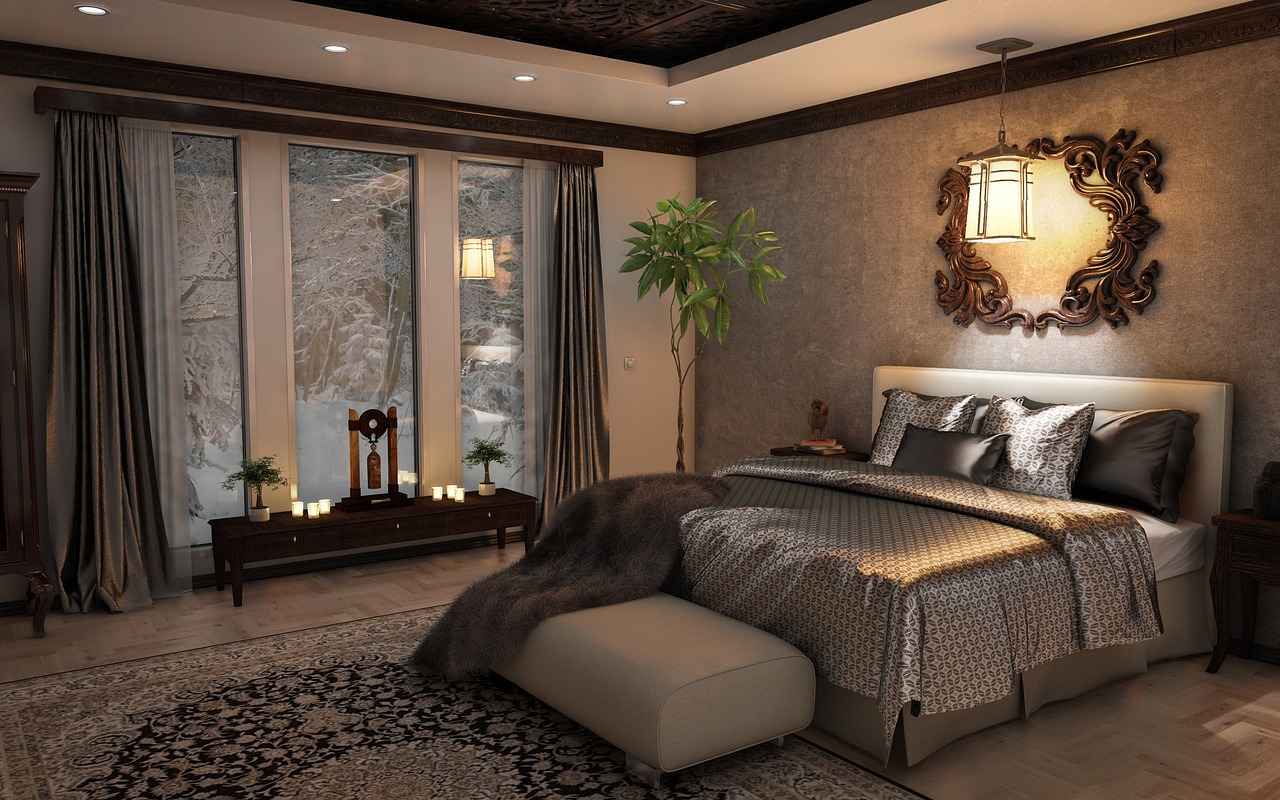
2. Sustainable Materials in Furniture
As the world increasingly prioritizes sustainability, the furniture industry is undergoing a significant transformation. Designers and consumers alike are now seeking eco-friendly materials that not only enhance the aesthetic appeal of their spaces but also contribute positively to the environment. This shift is not just a trend; it is a necessary evolution towards more responsible living.
In this section, we will explore some of the best sustainable furniture options available, highlighting their benefits and how they can be seamlessly integrated into modern bedroom designs.
Bamboo and rattan have emerged as popular choices for sustainable furniture due to their rapid growth and minimal environmental impact. Both materials are not only durable but also offer a unique aesthetic that can elevate any bedroom.
- Bamboo: Known for its strength and flexibility, bamboo is an incredibly versatile material. It can be crafted into everything from bed frames to dressers. Choosing bamboo furniture means investing in a product that is both stylish and sustainable, as it grows quickly and requires little water.
- Rattan: This natural material adds warmth and texture to bedroom decor. Rattan furniture is lightweight yet sturdy, making it ideal for various styles, from bohemian to contemporary. Its timeless charm can create a cozy atmosphere, perfect for relaxation.
Recycled materials are gaining traction as eco-conscious consumers look for ways to reduce waste. Furniture made from recycled elements can be both unique and stylish, offering a great conversation starter in any bedroom.
- Reclaimed Wood: Furniture made from reclaimed wood not only reduces the demand for new materials but also brings character and history into your home. Each piece tells a story, making it a perfect addition to a personalized bedroom.
- Recycled Metal: Incorporating recycled metal into furniture designs can create a modern industrial look. This durable option is perfect for those seeking a contemporary aesthetic while remaining environmentally responsible.
When it comes to textiles, organic fabrics are an excellent choice for sustainable furniture. These materials are produced without harmful chemicals, making them safer for both the environment and your health.
- Organic Cotton: Soft and breathable, organic cotton is perfect for bedding and upholstery. It is grown without synthetic pesticides, making it a healthier choice for your bedroom.
- Linen: Made from the flax plant, linen is a durable and biodegradable fabric. Its natural texture adds elegance to any space, and it becomes softer with each wash, enhancing comfort.
Opting for sustainable furniture goes beyond aesthetics. Here are a few key benefits:
- Environmental Impact: By choosing eco-friendly materials, you are reducing your carbon footprint and supporting sustainable practices.
- Healthier Living Spaces: Sustainable furniture often contains fewer harmful chemicals, contributing to better indoor air quality.
- Long-Term Value: Many sustainable materials are designed to last, offering durability and longevity that can save money in the long run.
In conclusion, as you explore your options for bedroom furniture, consider the myriad benefits of sustainable materials. Not only do they enhance the aesthetic appeal of your space, but they also support a healthier planet. By making informed choices, you can create a beautiful and responsible living environment.
2.1. Bamboo and Rattan Furniture
Bamboo and rattan are rapidly gaining traction in the world of interior design, particularly in bedroom furniture. These materials not only offer a unique aesthetic appeal but also provide numerous practical benefits that align with modern sustainability practices.
As consumers become more environmentally conscious, the demand for sustainable materials has surged. Bamboo, a grass that grows exceptionally fast, is considered one of the most eco-friendly options available. It can reach maturity in just three to five years, making it a renewable resource. In contrast, traditional hardwoods can take decades to grow. This rapid growth rate ensures that bamboo furniture is both sustainable and durable.
Rattan, on the other hand, is a climbing palm that is harvested for its flexible stems. It has been used for centuries in furniture making due to its strength and lightweight properties. Rattan furniture is known for its natural charm and ability to blend seamlessly into various decor styles, from coastal and bohemian to modern and minimalist.
| Material | Benefits | Design Styles |
|---|---|---|
| Bamboo | Durable, eco-friendly, versatile | Modern, minimalist, Asian-inspired |
| Rattan | Lightweight, flexible, warm texture | Bohemian, coastal, vintage |
Incorporating bamboo and rattan into your bedroom can significantly enhance its aesthetic appeal. Bamboo bed frames and dressers lend a contemporary look while providing sturdy support for your mattress and belongings. The natural finish of bamboo can complement a variety of color palettes, making it a versatile choice for any bedroom theme.
Rattan furniture, such as headboards or accent chairs, adds a touch of warmth and texture that can create a cozy atmosphere. These pieces often feature intricate weaving patterns that serve as eye-catching focal points in the room. When styled correctly, rattan can transform a simple bedroom into a chic sanctuary.
- Eco-Friendly Choice: Both bamboo and rattan are sustainable materials that contribute to a healthier planet.
- Versatile Design: These materials can fit into various design schemes, enhancing both modern and traditional aesthetics.
- Durability: Bamboo is known for its strength, while rattan is flexible, making both materials long-lasting options for furniture.
Furthermore, the maintenance of bamboo and rattan furniture is relatively easy. Regular dusting and occasional cleaning with a damp cloth can keep these pieces looking fresh and vibrant. Unlike some other materials, they do not require extensive upkeep, making them ideal for busy lifestyles.
As you consider upgrading your bedroom furniture, think about the benefits of incorporating bamboo and rattan. Not only will you be choosing stylish and durable options, but you’ll also be making a choice that is kind to the environment. By embracing these materials, you can create a bedroom that is not only visually appealing but also a reflection of your commitment to sustainability.
2.1.1. Benefits of Bamboo Furniture
Bamboo furniture is rapidly gaining traction in the world of interior design, especially for bedrooms. This is largely due to its remarkable strength and versatility, making it an ideal choice for those seeking both style and functionality. In this section, we will delve into the numerous benefits of bamboo furniture, highlighting why it deserves a prominent place in your bedroom.
- Sustainability: Bamboo is one of the most sustainable materials available. It grows incredibly fast, reaching maturity in just three to five years, compared to traditional hardwoods that can take decades. This rapid growth means that bamboo can be harvested without causing significant damage to the environment, making it a renewable resource.
- Durability: Despite its lightweight appearance, bamboo is known for its exceptional strength. In fact, it is often compared to steel in terms of tensile strength. This durability makes bamboo furniture not only long-lasting but also resistant to warping and cracking, ensuring that your investment stands the test of time.
- Chic Aesthetic: Bamboo furniture exudes a natural elegance that can enhance the overall aesthetic of your bedroom. Its unique grain patterns and warm tones create a soothing atmosphere, making it a perfect fit for various design styles, from modern to rustic.
- Hypoallergenic Properties: Bamboo is naturally resistant to mold, mildew, and pests, making it an excellent choice for individuals with allergies. This quality contributes to a healthier indoor environment, allowing for better air quality in your bedroom.
- Easy Maintenance: Maintaining bamboo furniture is relatively simple. Regular dusting and occasional cleaning with a damp cloth are usually sufficient to keep it looking new. Unlike other materials that may require special treatments or products, bamboo’s natural finish is easy to care for.
- Versatile Design Options: Bamboo furniture comes in a variety of styles, from sleek and modern to traditional and ornate. This versatility allows you to find pieces that suit your personal taste and blend seamlessly with your existing decor.
In summary, the benefits of bamboo furniture extend beyond its aesthetic appeal. Its sustainability, durability, and hypoallergenic properties make it a practical choice for those looking to furnish their bedrooms. As we continue to prioritize eco-friendly options in our homes, bamboo stands out as a smart investment for both your personal style and the environment.
2.1.2. Rattan’s Timeless Charm
Rattan furniture has long been celebrated for its ability to infuse a sense of warmth and texture into any bedroom. As we move into 2025, the timeless charm of rattan continues to captivate designers and homeowners alike, making it a staple in modern bedroom decor. This article explores how to effectively style rattan pieces to create a cozy and inviting atmosphere that resonates with both comfort and elegance.
One of the most appealing aspects of rattan furniture is its natural aesthetic. The intricate weaving patterns and warm tones of rattan add a unique texture that can soften the overall look of a bedroom. To maximize this effect, consider incorporating a variety of rattan pieces, such as bedside tables, chairs, and even headboards. These elements can serve as focal points in your room, drawing the eye and creating a harmonious balance with other decor.
When styling rattan furniture, it’s essential to consider the surrounding elements. Pairing rattan with soft textiles—such as plush throws, cushions, and bed linens—can enhance the cozy vibe. Opt for neutral or pastel colors to complement the natural tones of rattan, allowing the furniture to stand out while maintaining a serene atmosphere. Additionally, incorporating plants or greenery can further enhance the organic feel of the space, providing a refreshing contrast to the rattan’s texture.
- Layering Textures: Combine rattan with other materials like wood, metal, or fabric to create depth. For instance, a rattan chair paired with a wooden side table and a soft wool rug can create a visually appealing arrangement.
- Creating a Focal Point: Use a large rattan piece, such as a bed frame or a statement chair, to serve as the room’s focal point. This draws attention and sets the tone for the rest of the decor.
- Mixing Styles: Rattan’s versatility allows it to blend seamlessly with various styles, from bohemian to modern minimalist. Experiment with different decor styles to find the perfect match for your personal taste.
Another effective way to style rattan furniture is by incorporating artistic accessories. Consider adding decorative items such as woven baskets, ceramic vases, or framed artwork to enhance the visual interest of your space. These accessories can provide a personal touch while complementing the natural charm of the rattan.
Lighting also plays a crucial role in showcasing rattan furniture. Soft, warm lighting can enhance the natural hues of rattan, making it feel even more inviting. Consider using table lamps with rattan shades or pendant lights that echo the material’s texture to create a cohesive look throughout the room.
Ultimately, the key to styling rattan furniture lies in balance and harmony. By thoughtfully combining rattan pieces with complementary elements, you can create a bedroom that feels both cozy and stylish. Embrace the timeless charm of rattan, and let it transform your space into a serene retreat that invites relaxation and tranquility.
2.2. Recycled Materials
Recycled materials are rapidly gaining traction among eco-conscious consumers, becoming a staple in modern furniture design. As the world becomes increasingly aware of environmental issues, the demand for sustainable practices has surged. This shift has led designers to explore innovative ways to incorporate recycled elements into their creations, resulting in unique and stylish furniture that not only looks good but also contributes positively to the planet.
Incorporating recycled materials into furniture design offers several benefits. Firstly, it significantly reduces waste, as materials that would otherwise end up in landfills are repurposed into functional items. Secondly, using recycled elements often leads to distinctive designs that tell a story, making each piece unique. For example, furniture made from reclaimed wood boasts a rich history, showcasing the natural imperfections and character that come with age.
Here are some popular types of recycled materials used in furniture design:
- Reclaimed Wood: This material is sourced from old buildings, barns, and other structures. Its rustic charm and durability make it a favorite among designers.
- Recycled Metal: Often used for frames and accents, recycled metal adds an industrial touch to furniture pieces while being environmentally friendly.
- Recycled Plastic: Furniture made from recycled plastic is not only lightweight and durable but also available in a variety of colors and styles, appealing to a wide range of tastes.
- Upcycled Fabrics: Textiles from old garments or unused fabric can be transformed into stunning upholstery for chairs and sofas, adding a unique flair to any room.
In addition to their environmental benefits, recycled materials can also contribute to cost savings. Many consumers are discovering that opting for furniture made from recycled elements can be more affordable than purchasing new, mass-produced items. This is particularly true for pieces that highlight the natural beauty of the materials used, such as reclaimed wood tables or chairs.
Moreover, the aesthetic appeal of recycled materials cannot be overlooked. They often bring a sense of warmth and character to a space, creating a cozy atmosphere that new materials may lack. Designers are increasingly experimenting with combinations of recycled elements, blending different textures and finishes to create visually stunning pieces that stand out.
When considering furniture made from recycled materials, it’s essential to look for reputable brands that prioritize quality and sustainability. Many companies now offer certifications or transparency about their sourcing practices, allowing consumers to make informed choices. By supporting these brands, you contribute to a market that values sustainability and innovation.
As we move towards a more eco-conscious future, the use of recycled materials in furniture design will undoubtedly continue to grow. This trend not only reflects a shift in consumer preferences but also highlights the importance of sustainability in our everyday lives. Embracing recycled elements in your home decor is a fantastic way to make a statement while being kind to the planet.
In conclusion, incorporating recycled materials into furniture design is a win-win for both consumers and the environment. By choosing pieces that are not only stylish but also sustainable, you can create a unique space that reflects your values and aesthetic. As we look ahead to 2025, expect to see even more innovative designs that celebrate the beauty of recycling and sustainability.
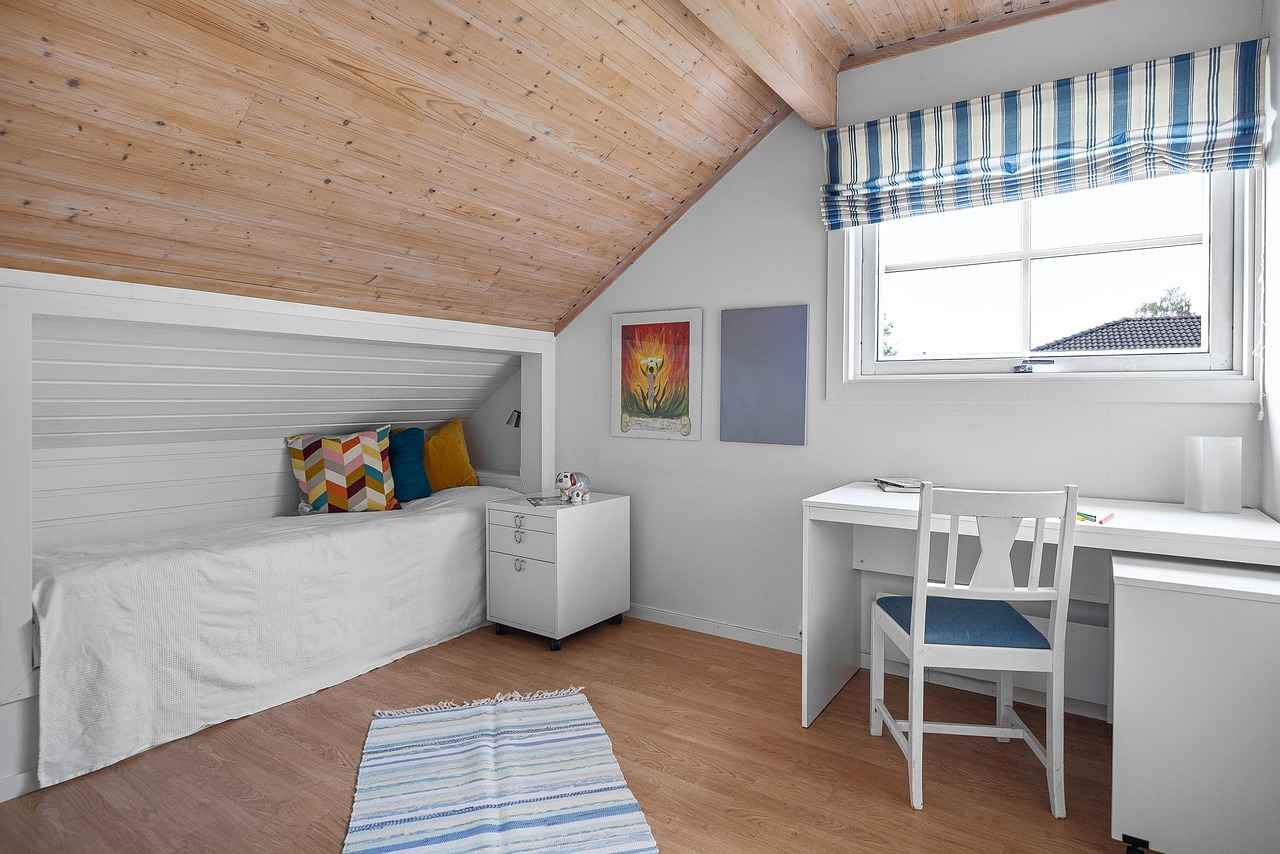
3. Smart Furniture Solutions
The rapid evolution of technology has given rise to a new era in home design, particularly in the realm of bedroom furniture. As we move into 2025, the integration of smart technology into furniture pieces is becoming increasingly popular, enhancing both convenience and functionality. This section explores the various aspects of smart furniture solutions that are transforming our living spaces.
Smart beds and mattresses are revolutionizing the way we think about sleep. These innovative products are equipped with advanced features such as:
- Sleep Tracking: Many smart mattresses come with built-in sensors that monitor your sleep patterns, providing insights on how to improve your rest.
- Adjustable Firmness: Some models allow users to customize the firmness level, ensuring optimal comfort for different sleeping positions.
- Temperature Control: Advanced technology can regulate the mattress temperature, keeping you cool in summer and warm in winter.
By investing in a smart bed, you can significantly enhance your sleep quality, making it a worthwhile addition to your bedroom.
In today’s fast-paced world, space-saving solutions are essential, especially for those living in smaller apartments. Multi-functional furniture serves multiple purposes, maximizing the utility of your space. Examples include:
- Convertible Sofas: These can transform from a sofa to a bed, perfect for accommodating guests.
- Storage Ottomans: Providing extra seating while also offering hidden storage for blankets or books.
- Wall-Mounted Desks: Ideal for creating a workspace that can be tucked away when not in use.
These versatile pieces not only save space but also help maintain a clutter-free environment, making them a smart choice for any modern bedroom.
Beyond just smart beds and multi-functional furniture, the integration of technology into various furniture items is becoming more prevalent. Consider the following:
- Smart Lighting: Bedside lamps that can be controlled via smartphone apps, allowing you to adjust brightness or color temperature without leaving your bed.
- Wireless Charging Stations: Many nightstands now come equipped with built-in wireless chargers, making it easy to keep devices powered up overnight.
- Voice-Controlled Furniture: Imagine being able to adjust your blinds or lighting with simple voice commands; this technology is becoming more accessible.
These features not only enhance convenience but also promote a seamless lifestyle, where everything you need is just a touch or a voice command away.
Smart furniture is also focusing on health and wellness. For instance, some beds offer features designed to improve your overall health:
- Posture Support: Adjustable bases can help maintain proper posture while sleeping, reducing back pain.
- Air Quality Monitoring: Certain smart beds can track air quality and suggest improvements, ensuring a healthier sleep environment.
- Wake-Up Alarms: Gentle wake-up features that mimic natural sunlight can make waking up less jarring.
Incorporating these elements into your bedroom can lead to a more restful and health-conscious lifestyle.
As we embrace the future of home design, smart furniture solutions are not just a trend; they are a response to our evolving needs for convenience, functionality, and wellness. By integrating these innovative pieces into your bedroom, you can create a space that is not only stylish but also enhances your quality of life.
3.1. Smart Beds and Mattresses
Smart beds and mattresses are revolutionizing the way we experience sleep. These innovative products are designed with advanced features that aim to enhance sleep quality, making them a valuable addition to any modern bedroom. In this section, we will explore the various benefits of smart beds and mattresses, highlighting how they can transform your sleep experience.
- Personalized Sleep Tracking: Many smart mattresses come equipped with sensors that monitor your sleep patterns. By analyzing your movements and heart rate, these devices provide insights into your sleep quality, helping you make informed decisions about your sleep habits.
- Adjustable Firmness: One of the standout features of smart mattresses is the ability to adjust firmness levels. Users can customize their mattress settings to achieve the perfect balance of comfort and support, catering to individual preferences and sleep styles.
- Temperature Control: Temperature regulation is crucial for a good night’s sleep. Smart mattresses often include features that allow you to control the temperature of the bed, ensuring you stay cool in the summer and warm in the winter.
- Integration with Smart Home Systems: Many smart beds can be integrated with existing smart home devices. This means you can adjust your mattress settings through voice commands or via mobile apps, enhancing convenience and accessibility.
- Sleep Aids and Features: Some smart mattresses come with built-in sleep aids such as white noise machines or gentle vibrations that help you fall asleep faster and stay asleep longer.
Investing in a smart bed or mattress can significantly impact your overall well-being. With the ability to monitor your sleep and provide personalized adjustments, these products cater to the unique needs of each sleeper. Furthermore, the integration of technology into your bedroom furniture not only enhances convenience but also elevates the overall aesthetic of your space.
As we move towards a more health-conscious society, the demand for products that promote better sleep is on the rise. Smart beds and mattresses are at the forefront of this trend, offering innovative solutions that align with the modern lifestyle. Whether you are looking to improve your sleep quality or simply want to incorporate the latest technology into your home, these smart products are worth considering.
In conclusion, the benefits of smart beds and mattresses extend beyond mere comfort. They provide valuable insights into your sleep patterns, allow for personalized adjustments, and seamlessly integrate with your smart home systems. As you design your bedroom for 2025, consider how these innovative products can enhance your sleep experience and contribute to a healthier lifestyle.
3.2. Multi-Functional Furniture
In today’s fast-paced world, multi-functional furniture has emerged as a critical solution for maximizing space and enhancing versatility, especially in smaller bedrooms. These innovative pieces not only save precious square footage but also adapt to the diverse needs of modern living.
When selecting multi-functional furniture, it is essential to consider the specific requirements of your space. Here are some tips to help you choose the right pieces:
- Assess Your Needs: Identify what functions your furniture must serve. Do you need extra storage, a workspace, or a guest bed? Understanding your needs will guide your selection.
- Measure Your Space: Before purchasing, measure your room to ensure that the furniture fits well without overcrowding the area. Consider the flow of movement in the room.
- Prioritize Quality: Invest in durable materials that can withstand daily use. High-quality multi-functional furniture can last longer and provide better value.
- Consider Style: Choose pieces that match your bedroom’s aesthetic. Whether you prefer modern, rustic, or minimalist designs, there are multi-functional options available in various styles.
Some popular types of multi-functional furniture include:
| Furniture Type | Functionality |
|---|---|
| Murphy Bed | Transforms from a bed to a wall unit, freeing up floor space when not in use. |
| Storage Ottomans | Serve as seating while providing hidden storage for blankets or books. |
| Convertible Sofas | Can be used as a sofa during the day and converted into a bed at night. |
| Desk with Storage | Functions as a workspace while offering drawers or shelves for organization. |
Incorporating multi-functional furniture into your bedroom can significantly enhance its usability. For instance, a Murphy bed is ideal for those who host guests occasionally but prefer a spacious room for daily activities. Similarly, a convertible sofa allows you to seamlessly transition from a cozy lounge area to a guest sleeping space.
Moreover, these pieces can often be designed with aesthetics in mind, ensuring that they not only serve practical purposes but also contribute to the overall style of your bedroom. Look for furniture with clean lines and neutral colors that can blend well with various decor themes.
Ultimately, the goal of multi-functional furniture is to create a harmonious balance between functionality and style. By carefully selecting pieces that cater to your specific needs, you can transform your small bedroom into a versatile and inviting space. Embrace the trend of multi-functional furniture in your home and enjoy the benefits of a well-organized, stylish living environment.
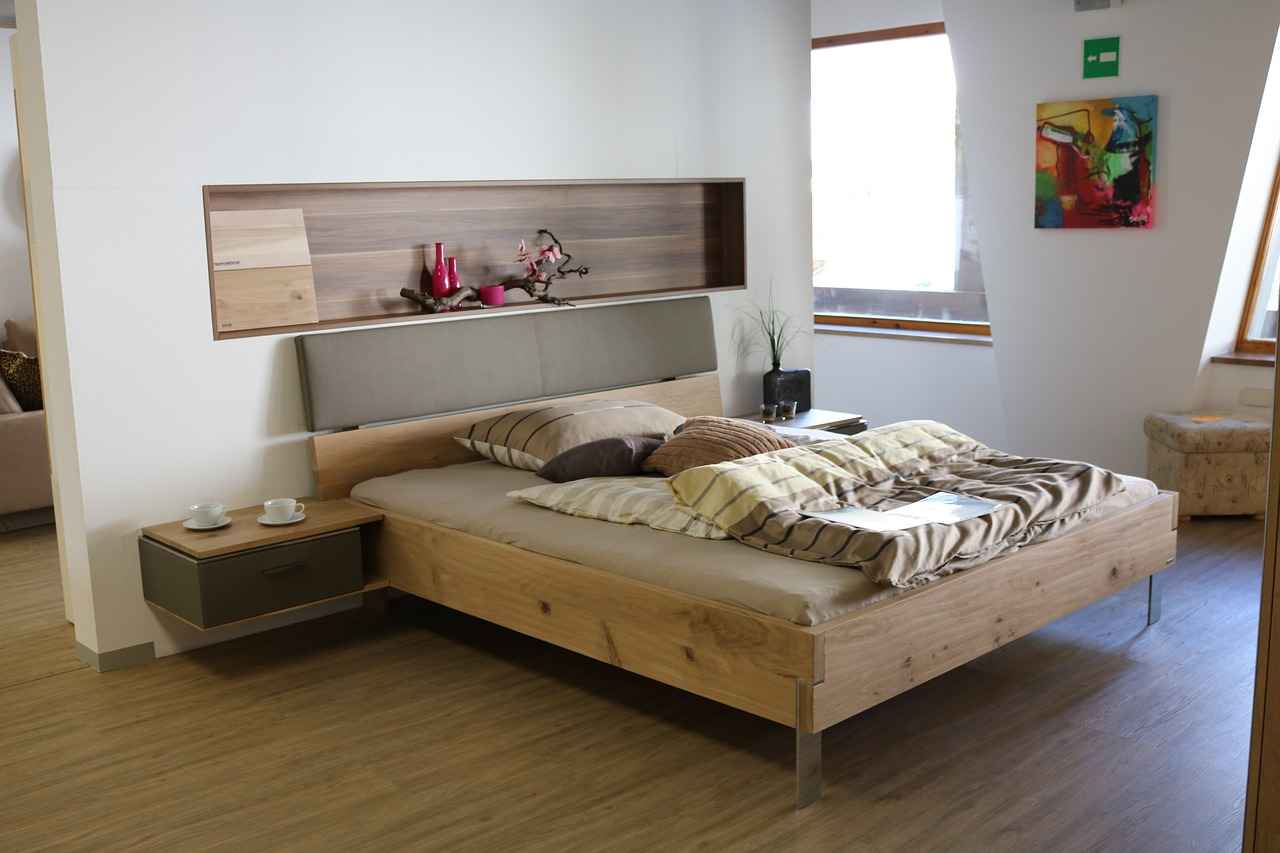
4. Bold Colors and Patterns
In 2025, the realm of bedroom design is set to be transformed by the use of bold colors and vibrant patterns. These elements are not just trends; they are essential components that can breathe life into your personal sanctuary. This article will guide you on how to effectively incorporate these striking hues and unique designs into your bedroom, creating a space that reflects your personality and style.
Choosing bold colors can dramatically alter the ambiance of your bedroom. Here are some popular color schemes to consider:
- Deep Blues and Greens: These colors evoke a sense of calm and tranquility, making them perfect for a restful environment.
- Vivid Reds and Oranges: Ideal for those who want to make a statement, these colors can energize the space.
- Bright Yellows and Pinks: These cheerful tones can add a touch of playfulness and warmth to your bedroom.
One of the most effective ways to introduce bold colors is through accent walls. Here are some tips:
- Choose a wall that naturally draws attention, such as the wall behind your bed.
- Experiment with geometric patterns or bold wallpaper to create a striking visual impact.
- Consider using paint techniques like ombre or color blocking for a modern twist.
In addition to colors, the use of textured fabrics can enhance the overall design of your bedroom. Here are some ideas:
- Layered Textiles: Combine different fabrics like velvet, linen, and cotton to create depth.
- Patterned Bedding: Choose bedding with bold prints to serve as a focal point in your room.
- Statement Rugs: A vibrant rug can tie the room together while adding comfort and style.
Accessories play a crucial role in accentuating bold colors and patterns. Consider the following:
- Artwork: Select pieces that feature bold colors or patterns to complement your design theme.
- Cushions and Throws: Use these to introduce additional colors and textures without overwhelming the space.
- Lighting Fixtures: Opt for unique lamps or chandeliers that incorporate bold designs or colors.
While it’s exciting to embrace bold colors and patterns, it’s essential to maintain balance. Here are some strategies:
- Neutral Walls: Keep the walls neutral to allow your bold elements to stand out.
- Complementary Furniture: Choose furniture pieces in muted tones that harmonize with your vibrant decor.
- Natural Elements: Incorporate plants or wooden accents to ground the space and create a calming effect.
In conclusion, the use of bold colors and patterns in bedroom design for 2025 is all about expressing individuality and creating a striking atmosphere. By carefully selecting vibrant hues, incorporating unique designs, and balancing them with neutral elements, you can transform your bedroom into a stylish retreat that resonates with your personal style.
4.1. Accent Walls
Accent walls have become a popular choice for homeowners looking to add a touch of personality and style to their bedrooms. By strategically selecting a bold color or an eye-catching pattern, you can create a focal point that enhances the overall design of the space. This article will guide you through the process of choosing the right color and pattern for your accent wall, ensuring it complements your bedroom’s aesthetic.
When considering an accent wall, the first step is to think about the color scheme of your bedroom. A well-chosen color can either contrast with or complement the existing hues in your room. For example, if your bedroom features soft, muted tones, a deep navy or rich emerald green can create a stunning contrast. On the other hand, if your space is already vibrant, consider a more subdued tone that harmonizes with the overall palette.
Next, think about the mood you want to create. Different colors evoke different feelings; for instance, blue is calming, while yellow is energizing. If you aim for a serene atmosphere, soft blues or greens may be ideal. Conversely, if you want to inject energy into the room, consider warm colors like coral or terracotta.
Once you’ve determined the color, the next step is to select a pattern. Patterns can range from geometric shapes to floral designs, and the right choice can add depth and interest to your accent wall. For a modern look, geometric patterns in monochromatic shades can create a sleek, sophisticated vibe. Alternatively, a bold floral design can introduce a touch of warmth and whimsy, perfect for a cozy bedroom.
| Color | Mood | Pattern Ideas |
|---|---|---|
| Soft Blue | Calm | Subtle Waves |
| Deep Green | Relaxing | Geometric Shapes |
| Coral | Energetic | Floral Designs |
| Charcoal | Modern | Stripes |
After you have chosen the color and pattern, consider the placement of your accent wall. Typically, an accent wall works best on the wall behind the bed, as it naturally draws the eye. However, you can also experiment with other walls, such as the one opposite the bed or a side wall that highlights a piece of furniture.
Finally, think about the finishing touches. The right decor can elevate your accent wall even further. Consider adding framed artwork, mirrors, or shelves to enhance the visual interest of the wall. Lighting is also crucial; using wall sconces or accent lights can create a warm glow, emphasizing the wall’s color and pattern.
In conclusion, accent walls are a powerful tool in bedroom design. By carefully selecting the right color, pattern, and placement, you can dramatically transform your space, making it more inviting and stylish. Whether you opt for a bold statement or a subtle enhancement, the right accent wall can truly elevate your bedroom’s overall design.
4.2. Textured Fabrics
Textured fabrics are rapidly becoming a defining feature in contemporary bedroom design, offering a unique way to enhance the overall aesthetic and comfort of your space. These materials not only add visual interest but also contribute to a tactile experience that can transform the atmosphere of your bedroom. In this section, we will explore the latest trends in textured fabrics and how they can elevate your furniture choices.
One of the most exciting aspects of textured fabrics is their ability to create depth and dimension in your decor. From luxurious velvets to cozy knits, the variety of textures available allows for endless possibilities in styling. For instance, pairing a plush velvet duvet cover with crisp cotton sheets can create a layered look that is both inviting and sophisticated.
In 2025, we see an increasing trend towards using bold patterns and rich colors in textured fabrics. Fabrics featuring geometric prints or floral designs can serve as statement pieces, drawing the eye and adding personality to your bedroom. Consider adding a vibrant textured throw pillow or a patterned area rug to complement your existing furniture and create a cohesive look.
Another important trend is the use of eco-friendly textiles. Many designers are now opting for organic cotton, linen, and recycled materials, which not only contribute to a sustainable lifestyle but also offer unique textures that enhance comfort and style. By choosing sustainable fabrics, you can make a positive impact on the environment while still achieving a chic and modern bedroom.
When it comes to furniture choices, integrating textured fabrics can significantly enhance the overall design. For example, upholstered headboards in textured materials like boucle or chenille can serve as a stunning focal point in your bedroom. These fabrics not only add comfort but also elevate the sophistication of your furniture.
Moreover, layering different textures is a key technique in achieving a well-designed bedroom. Consider mixing and matching fabrics such as linen curtains, a knitted throw blanket, and a faux fur rug. This approach creates a cozy and inviting atmosphere that encourages relaxation.
In addition to aesthetics, textured fabrics can also play a role in improving the functionality of your bedroom. For instance, using moisture-wicking fabrics for bedding can help regulate temperature and enhance sleep quality. This is particularly important in today’s fast-paced world, where a good night’s sleep is essential for overall well-being.
As you explore the latest trends in textured fabrics, remember that the goal is to create a space that reflects your personal style while remaining functional and comfortable. Whether you opt for bold colors, sustainable materials, or luxurious textures, the key is to find a balance that resonates with you.
In conclusion, textured fabrics are an integral part of contemporary bedroom design, offering both style and functionality. By incorporating these elements into your space, you can create a bedroom that is not only visually appealing but also a sanctuary for relaxation and rejuvenation.
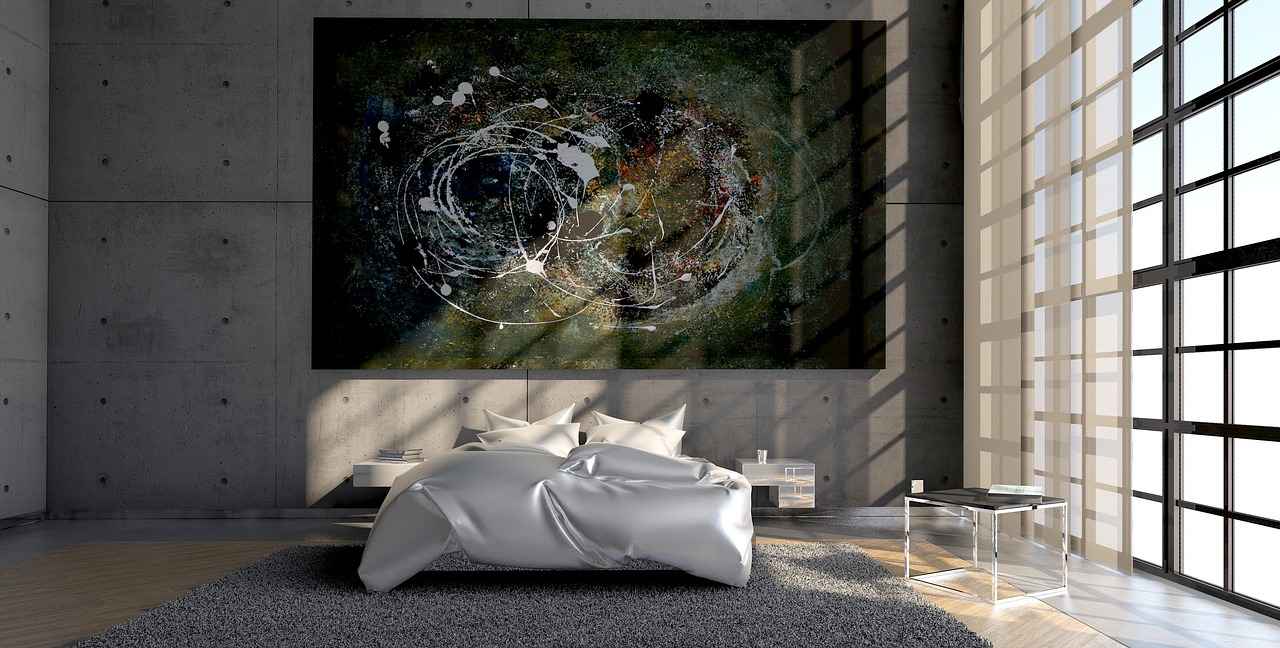
5. Vintage and Retro Styles
Vintage and retro styles are experiencing a remarkable resurgence in the world of bedroom furniture design. As homeowners seek to create spaces that reflect both nostalgia and modernity, blending these two elements has become a popular trend. This article explores how to effectively incorporate vintage and retro pieces into your bedroom while maintaining a contemporary aesthetic.
One of the most appealing aspects of vintage and retro styles is their timeless charm. Mid-century modern furniture, characterized by its clean lines and organic shapes, is a prime example of how old styles can harmonize with new designs. To create a cohesive look, consider pairing a sleek, modern bed frame with vintage nightstands or dressers. This not only adds visual interest but also creates a unique focal point in the room.
Moreover, color schemes play a crucial role in achieving the perfect blend of vintage and modern elements. Opt for a palette that includes soft pastels or rich jewel tones, reminiscent of the mid-20th century, while also incorporating neutral shades to maintain a contemporary feel. For instance, a mint green or mustard yellow accent chair can serve as a striking contrast against a modern gray or white backdrop.
| Vintage Elements | Modern Elements |
|---|---|
| Antique dressers | Sleek, minimalist bed frames |
| Retro lighting fixtures | Contemporary wall sconces |
| Classic artwork | Abstract prints |
Incorporating antique accents can also enhance the vintage vibe of your bedroom. Items such as ornate mirrors, vintage clocks, or even framed photographs can add character and tell a story. When styling these pieces, ensure they complement your modern furnishings. For example, a vintage mirror can be placed above a modern dresser, serving both functional and decorative purposes.
Another trend gaining traction is the use of reclaimed materials. Furniture made from reclaimed wood or upcycled items not only emphasizes sustainability but also adds a rustic charm that pairs beautifully with retro styles. Consider a reclaimed wood headboard or a vintage trunk at the foot of your bed for added storage and style.
When it comes to bedding and textiles, mixing patterns is a great way to achieve a retro aesthetic. Look for bed linens that feature bold geometric patterns or floral designs typical of past decades. Layering these with modern throws or pillows can create a visually appealing contrast that enhances the overall design of the room.
To tie everything together, consider incorporating modern technology subtly into your vintage-inspired space. Smart lighting or integrated charging stations can be hidden within vintage-style furniture, ensuring that your bedroom remains functional without sacrificing style.
In conclusion, blending vintage and retro styles with modern elements in bedroom furniture design creates a unique and inviting atmosphere. By thoughtfully selecting pieces that complement each other and paying attention to color schemes, textures, and materials, you can achieve a harmonious balance that reflects your personal style while embracing the charm of the past.
5.1. Mid-Century Modern Influence
Mid-century modern furniture has become a staple in the world of interior design, celebrated for its timeless appeal and functional elegance. Originating in the mid-20th century, this design movement emphasizes simplicity, clean lines, and organic forms, making it a perfect fit for contemporary bedrooms seeking a chic aesthetic.
To effectively incorporate mid-century modern designs into your bedroom, consider the following essential elements:
- Color Palette: Mid-century modern furniture often features a palette of muted tones, including earthy browns, soft greens, and vibrant pops of color. Consider using these hues for your bedding, curtains, or accent pieces to create a cohesive look.
- Furniture Selection: Look for iconic pieces such as low-profile beds with tapered legs, sleek nightstands, and minimalist dressers. These elements not only enhance functionality but also add an artistic flair to your space.
- Materials: Embrace natural materials like wood, leather, and textiles that are characteristic of mid-century modern designs. For instance, a walnut dresser or a leather chair can serve as stunning focal points.
In addition to furniture selection, consider the layout of your bedroom. Mid-century modern design emphasizes open spaces and flow. Avoid overcrowding your room with excessive decor; instead, opt for a few statement pieces that highlight the beauty of the furniture.
Another vital aspect of mid-century modern design is the integration of art and decor. Abstract art pieces, geometric patterns, and vintage accessories can complement your furniture while adding personality to the room. For instance, a large abstract painting above the bed can serve as a stunning visual anchor.
Lighting also plays a crucial role in achieving the mid-century modern aesthetic. Look for unique light fixtures such as pendant lamps or floor lamps with clean lines and organic shapes. These can enhance the overall ambiance and highlight the beauty of your furniture.
Moreover, incorporating textiles is essential for creating a cozy atmosphere. Use area rugs with geometric patterns or textured throws on your bed to add warmth and depth to the space. Soft, inviting fabrics can balance the sleekness of mid-century modern furniture.
Lastly, consider the personal touch. While mid-century modern design is characterized by its simplicity, adding personal elements like family photos in stylish frames or curated books can make the space feel uniquely yours. The key is to maintain balance; the decor should enhance, not overpower, the beauty of your furniture.
In summary, embracing mid-century modern influence in your bedroom design can lead to a stylish, functional, and inviting space. By focusing on color, furniture selection, materials, decor, lighting, textiles, and personalization, you can create a chic aesthetic that honors this timeless design movement.
5.2. Antique Accents
Incorporating antique accents into your bedroom design can create a unique blend of history and modernity. These vintage pieces not only add character but also serve as conversation starters, making your space feel more inviting. As the trend of mixing old with new continues to gain traction, understanding how to select and style these items effectively is essential.
When selecting antique accents, consider the following tips:
- Assess Your Space: Before purchasing, evaluate your bedroom’s color scheme and overall style. Look for antiques that either complement or contrast with your existing decor.
- Focus on Quality: Choose well-crafted pieces that have stood the test of time. Inspect for any damage or wear that could detract from their beauty.
- Consider Functionality: Opt for antiques that serve a purpose. For example, a vintage nightstand can provide both style and utility.
Once you’ve selected the right pieces, here are some tips for styling them:
- Mix and Match: Combine antiques with contemporary furniture to create an eclectic look. A modern bed frame paired with a vintage dresser can create a stunning contrast.
- Layer Textures: Use textiles to enhance the antique elements. A vintage quilt or throw can add warmth and depth to your bedroom.
- Highlight Unique Features: Showcase the distinctive characteristics of your antiques. For example, if you have an ornate mirror, place it in a spot where it can reflect light and draw attention.
Several antique styles can fit seamlessly into a modern bedroom:
- Victorian: Known for intricate details and rich fabrics, Victorian pieces can add a touch of elegance.
- Mid-Century Modern: This style is characterized by clean lines and functional designs, making it a perfect match for contemporary aesthetics.
- Rustic Farmhouse: Antique furniture with a weathered finish can evoke a cozy, homey feel, ideal for creating a relaxing retreat.
To keep your antiques looking their best, follow these care tips:
- Avoid Direct Sunlight: Prolonged exposure can fade colors and damage finishes. Position your antiques away from direct sunlight.
- Regular Dusting: Use a soft cloth to dust your antiques regularly. This helps maintain their appearance and prevents buildup.
- Use Proper Cleaning Products: Avoid harsh chemicals. Instead, use gentle cleaners specifically designed for the material of your antique.
Incorporating antique accents into your bedroom not only enhances its aesthetic but also tells a story. By selecting the right pieces and styling them thoughtfully, you can create a harmonious blend of the past and present that reflects your personal style.
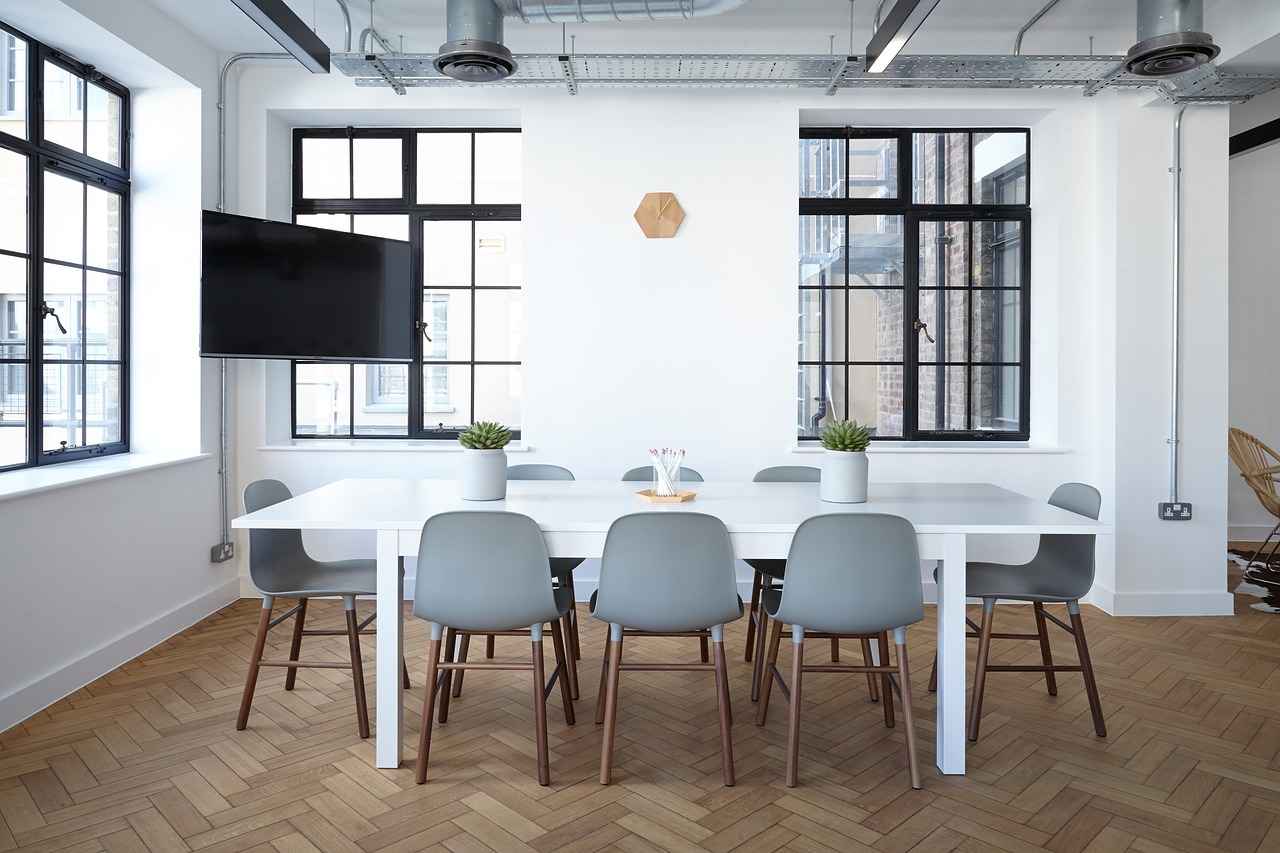
6. Personalization and Customization
Personalization and customization in bedroom furniture design is becoming increasingly popular as homeowners seek to create spaces that reflect their individual tastes and lifestyles. In 2025, the demand for unique furniture solutions will continue to rise, allowing individuals to express their personalities through their home decor.
One of the most exciting aspects of personalized furniture is the ability to choose customizable bed frames. These frames can be tailored to fit specific dimensions, styles, and materials, ensuring that they not only complement the bedroom’s aesthetic but also meet the homeowner’s practical needs. Options may include various finishes, colors, and even storage solutions integrated into the design. For instance, a platform bed with built-in drawers can maximize space while offering a sleek, modern look.
Moreover, personalization extends beyond just bed frames. Homeowners can explore personalized decor elements that add a unique touch to their bedrooms. This includes custom headboards, which can be upholstered in fabrics that resonate with the homeowner’s style, or even bespoke nightstands that match the overall theme of the room. Incorporating items such as family heirlooms or artistic pieces can further enhance the space, making it a true reflection of the individual’s journey and preferences.
- Custom Upholstery: Choose fabrics that resonate with your style, whether it’s luxurious velvet or casual linen.
- Unique Color Palettes: Select colors that evoke the desired mood, from calming neutrals to vibrant hues.
- Personal Artwork: Incorporate pieces that tell your story or inspire you daily.
Another trend in personalization is the use of modular furniture. These pieces can be rearranged or expanded as needed, allowing for a dynamic bedroom environment that can adapt to changing tastes or needs. For example, a modular shelving unit can be customized to fit different spaces or styles, providing both functionality and aesthetic appeal.
Furthermore, technology integration is playing a significant role in customization. Smart furniture options allow homeowners to personalize their spaces with features like adjustable lighting, built-in charging stations, and even sleep tracking capabilities. These innovations not only enhance the bedroom’s functionality but also cater to the modern homeowner’s lifestyle.
In addition to furniture choices, personalized bedding and accessories can significantly impact the overall look of the bedroom. From monogrammed sheets to custom-made quilts, these elements provide an opportunity to express individual style while ensuring comfort and quality. Textiles can also be selected based on personal preferences, allowing for a cohesive look that ties the entire room together.
Ultimately, the trend towards personalization and customization in bedroom furniture design reflects a broader desire for authenticity and individuality in our living spaces. As homeowners increasingly seek to create environments that resonate with their identities, the options for tailored furniture and decor will continue to expand, offering endless possibilities for self-expression.
By embracing these trends, individuals can transform their bedrooms into personalized sanctuaries that not only meet their practical needs but also serve as a canvas for their unique stories and styles.
6.1. Customizable Bed Frames
Customizable bed frames are revolutionizing the way we think about bedroom design. They offer a unique blend of flexibility and personalization, allowing homeowners to create a bed that not only meets their specific needs but also complements their individual style. As we delve into the various options available, you’ll discover how these frames can transform your sleeping space into a true reflection of your personality.
- Adjustable Heights: One of the most appealing features of customizable bed frames is the ability to adjust the height. This is especially beneficial for individuals with mobility issues or those who simply prefer a higher or lower bed. You can choose a frame that allows you to set the height that is most comfortable for you.
- Material Choices: Customizable frames often come in a variety of materials, including wood, metal, and upholstered options. Each material has its own aesthetic and functional benefits. For instance, wooden frames provide a classic look, while upholstered frames offer a softer, more modern feel.
- Design Styles: Whether you prefer a minimalist aesthetic or a more ornate design, customizable bed frames come in various styles. You can choose from sleek contemporary designs to more traditional looks, ensuring that your bed fits seamlessly with your overall bedroom decor.
- Storage Solutions: Many customizable bed frames offer built-in storage options, such as drawers or under-bed compartments. This feature is particularly useful for maximizing space in smaller bedrooms, allowing you to keep your belongings organized and out of sight.
- Headboard Options: Customizable frames often allow for the addition of personalized headboards. You can select from a range of styles, colors, and materials, or even opt for a custom design that adds a unique touch to your bedroom.
When considering a customizable bed frame, it’s essential to think about your specific needs and preferences. For example, if you have a particular mattress size, ensure that the frame accommodates it perfectly. Additionally, consider the overall design of your bedroom—your bed should be a focal point that enhances the space rather than detracts from it.
Moreover, many manufacturers now offer online tools that allow you to visualize your customized bed frame in a virtual setting. This can help you make informed decisions about the style, color, and material that will best suit your bedroom.
Incorporating a customizable bed frame into your bedroom not only enhances the aesthetic appeal but also improves functionality. With options ranging from adjustable heights to integrated storage solutions, these frames cater to a variety of lifestyles and preferences. As you explore the possibilities, remember that your bed is more than just a place to sleep—it’s a sanctuary that should reflect your unique style and needs.
In conclusion, customizable bed frames are an excellent investment for anyone looking to enhance their bedroom’s functionality and style. With the ability to tailor every aspect to your liking, you can create a space that is both comfortable and visually appealing. So, take the time to explore the various options available and design a bed that is truly your own.
6.2. Personalized Decor Elements
In today’s fast-paced world, creating a personal sanctuary in your bedroom is essential for relaxation and rejuvenation. One of the most effective ways to achieve this is by incorporating personalized decor elements. These unique touches not only reflect your personality but also make your space feel more inviting and warm.
- Custom Artwork: Consider displaying artwork that resonates with you. This could be a painting, a framed photograph, or even a collection of your favorite quotes. Custom pieces can evoke memories and emotions, making your bedroom a more meaningful space.
- Personalized Textiles: Use custom-made or monogrammed bedding, cushions, or throws to add a personal touch. Choose fabrics and patterns that reflect your style, whether it’s modern, bohemian, or classic.
- Memory Wall: Create a memory wall that showcases photos, postcards, or travel memorabilia. This visual narrative can serve as a daily reminder of cherished moments and adventures.
- DIY Decor: Embrace your creativity by crafting your own decor items. This could range from handmade wall hangings to painted furniture. DIY projects not only personalize your space but also provide a sense of accomplishment.
- Unique Furniture Pieces: Look for furniture that tells a story. Vintage finds or pieces with a history can add character to your bedroom. Consider customizing these items with paint or upholstery to match your aesthetic.
In addition to these elements, consider the color palette of your decor. Colors can significantly influence mood and ambiance. Opt for shades that evoke feelings of calmness and comfort. Soft pastels or earthy tones can create a serene environment, while vibrant colors can energize the space.
Another way to personalize your bedroom is through lighting. Utilize lamps, fairy lights, or candles that not only illuminate but also complement your decor style. Adjustable lighting can help set the mood, whether you’re winding down for the night or enjoying a cozy reading session.
Lastly, don’t forget the importance of plants. Incorporating greenery can breathe life into your bedroom. Choose low-maintenance plants that thrive in indoor conditions, such as succulents or snake plants. They not only improve air quality but also add a refreshing touch to your decor.
In summary, incorporating personalized decor elements into your bedroom is a wonderful way to create a space that feels uniquely yours. By choosing items that reflect your personality and style, you can transform your bedroom into a tranquil retreat that invites relaxation and comfort.
Frequently Asked Questions
- What are the key trends in bedroom furniture design for 2025?
The key trends include minimalist designs, sustainable materials like bamboo and rattan, smart furniture solutions, bold colors and patterns, vintage styles, and personalization options. These elements help create a modern and stylish bedroom that reflects your personality.
- How can I incorporate sustainable materials into my bedroom?
You can choose furniture made from eco-friendly materials such as bamboo, rattan, or recycled elements. These options not only look great but also contribute to environmental sustainability, making your bedroom both stylish and responsible.
- What is smart furniture, and how does it benefit my bedroom?
Smart furniture includes items like adjustable beds and multi-functional pieces that integrate technology to enhance convenience and functionality. They can improve your sleep quality and optimize your space, making your bedroom more efficient and comfortable.
- Can I mix vintage and modern furniture styles?
Absolutely! Blending vintage or retro pieces with modern furniture can create a unique and eclectic look. For instance, incorporating mid-century modern designs with contemporary elements adds character and depth to your bedroom decor.
- How can I personalize my bedroom furniture?
You can personalize your bedroom by selecting customizable bed frames or adding unique decor elements that reflect your style. Think about incorporating personal touches like artwork, family photos, or custom textiles to make the space truly yours.
